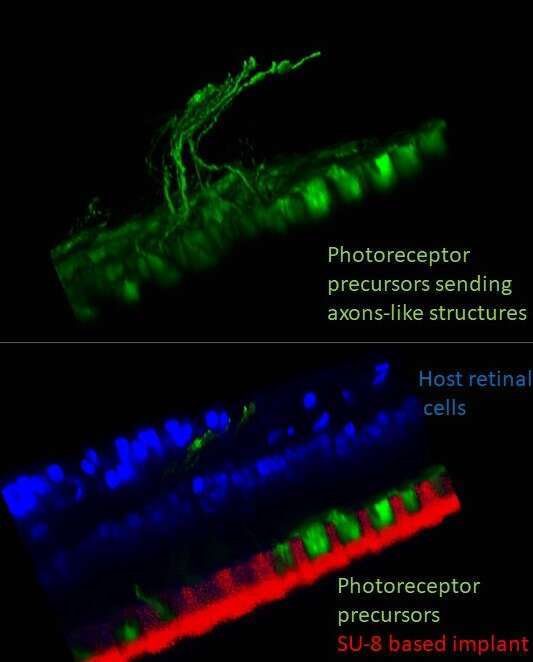
Hybrid retinal implant composed of high-resolution electrode array integrated with glutamatergic neurons for restoration of sight
2Bar-Ilan Institute for Nanotechnology and Advanced Materials (Bina), Bar-Ilan University, Ramat-Gan, Israel
3Faculty of Engineering, Bar-Ilan University, Ramat-Gan, Israel

Recent clinical trials with retinal prosthesis have shown restoration of sight with limited acuity and contrast due to inherent limitations of direct neuronal activation with current approaches. In order to overcome these limitations, we are developing a novel approach with a hybrid retinal prosthesis composed of a high-density electrode array integrated with glutamatergic neurons to create a tight neuron-electrode coupling. This system has the advantages of high-resolution and a natural activation of the host retina while preserving the retinal circuitry.
Toward this end we fabricated 30µm thin 1mm diameter retinal implants, composed of 10µm gold-electrode centered in SU-8 micro-wells. We generated photoreceptor precursors (PRP) from human embryonic stem cells using an optimized protocol developed by our group and by using path-clamp technique and calcium imaging we characterized the function electrophysiological properties of the cells. We found that the PRP can respond to electrical activation while increasing the intracellular concentration, as was further supported by qPCR analysis of various ionic channels. PRP seeded on the micro-wells arrays showed excellent viability following 1-week in-vitro as was found on biocompatibility assay. FIB/SEM imaging showed close proximity between the cell membrane, which is an important finding for the creation of electrical coupling between the electrode to the cells. In-vivo implantation of the hybrid implant to the subretinal space of rats showed good survival of the cells at 1 month, while many of the cells extending axon-like structure toward the inner retinal layers.
In this talk I will present these recent results with the development of a hybrid retinal implant with discussion on the advantages and challenges of this novel approach for restoration of sight to the blind.
Powered by Eventact EMS